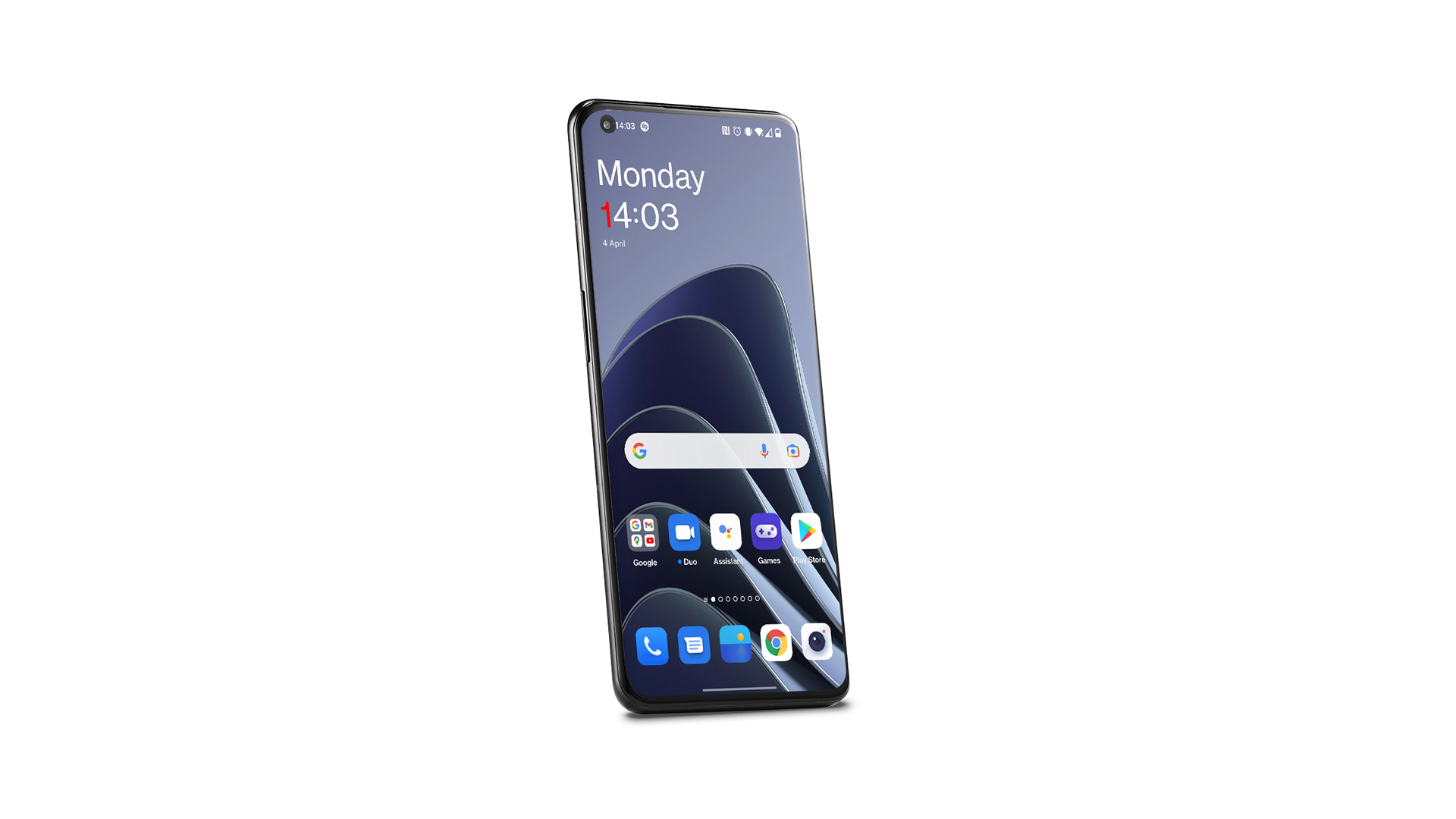What Hi-Fi? Verdict
A good phone for the money but it’s worth spending more if picture and sound quality really matter
Pros
- +
Good value
- +
Premium feel
- +
Solid picture performance
Cons
- -
Audio lacks energy and definition
- -
HDR viewing could be better
Why you can trust What Hi-Fi?
Big, premium and considerably less expensive than other flagship phones, the OnePlus 10 Pro is every bit the standard-bearer you’d expect. OnePlus has made a name for itself as a purveyor of high-end smartphones at a price that more people can afford and this 6.7-inch, 5G Android mobile is no exception. Several hundred pounds/dollars cheaper than the rest of the top-end competition, it’s going to make a lot of buyers’ shortlists.
The good news is that, if you’re after an impressive spec sheet and all the mobile mod-cons, then you’re definitely fishing in the right stretch of the river. For us, though, it’s screen and sound that count most. So, if you need your pocket portable to be a top-notch player first, and all other things mobile a definite second, then this is the low-down you need.
Price
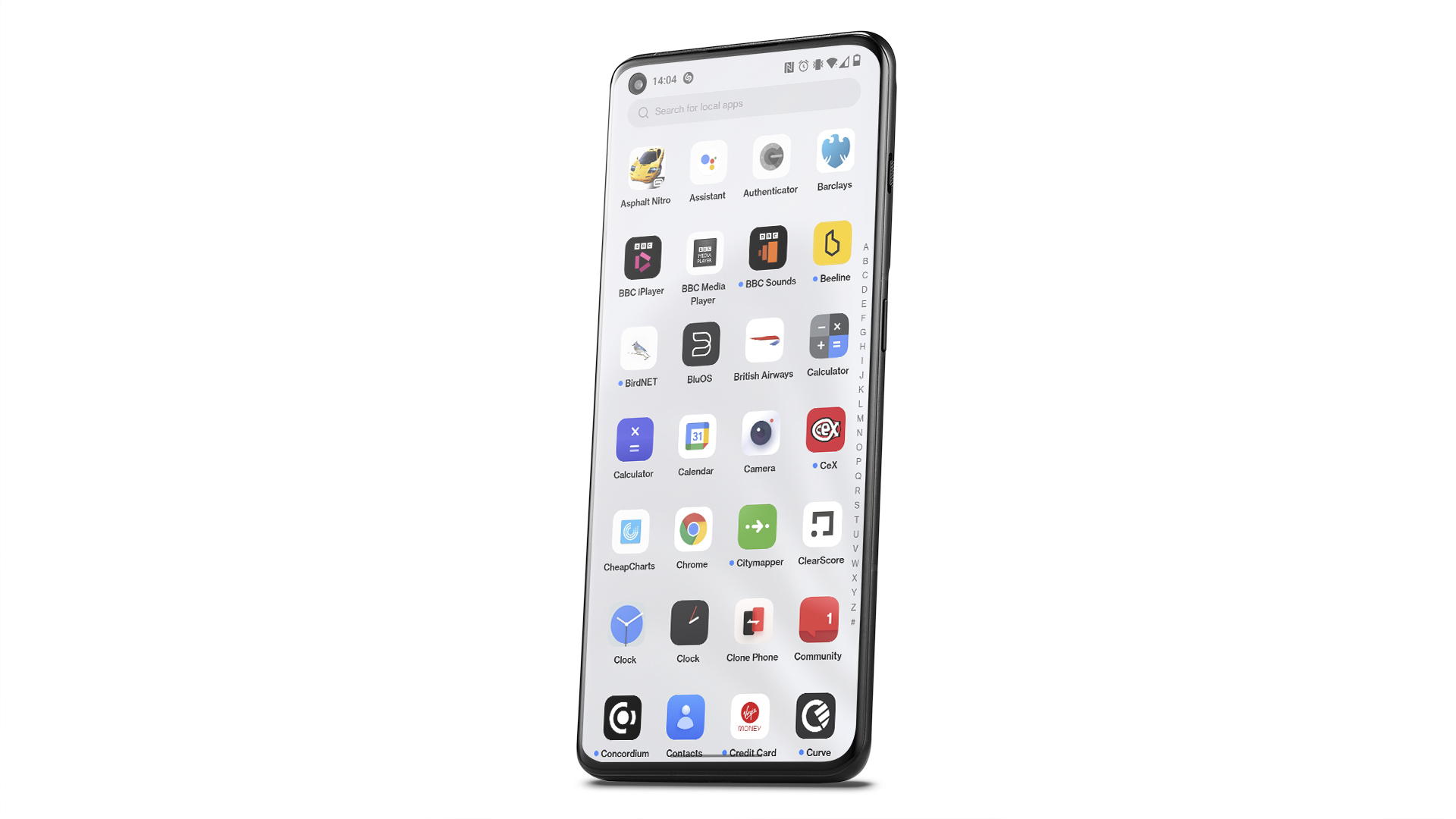
There are two variants of the OnePlus 10 Pro to note. The Volcanic Black version comes with 8GB RAM and 128GB of storage space. It’s not available in the US but will cost a very reasonable £799 in the UK. This is the OnePlus 10 Pro that we have on test here.
The price of the souped-up 12GB/256GB OnePlus 10 Pro is £899 and it’s also available in the States for $899. It comes in Emerald Forest. Considering the prices of similarly sized flagships from Samsung (S22 Ultra, £1149 / $1199) and Apple (iPhone 13 Pro Max, £1049 / $1099), both OnePlus models are undeniably aggressively priced.
Design
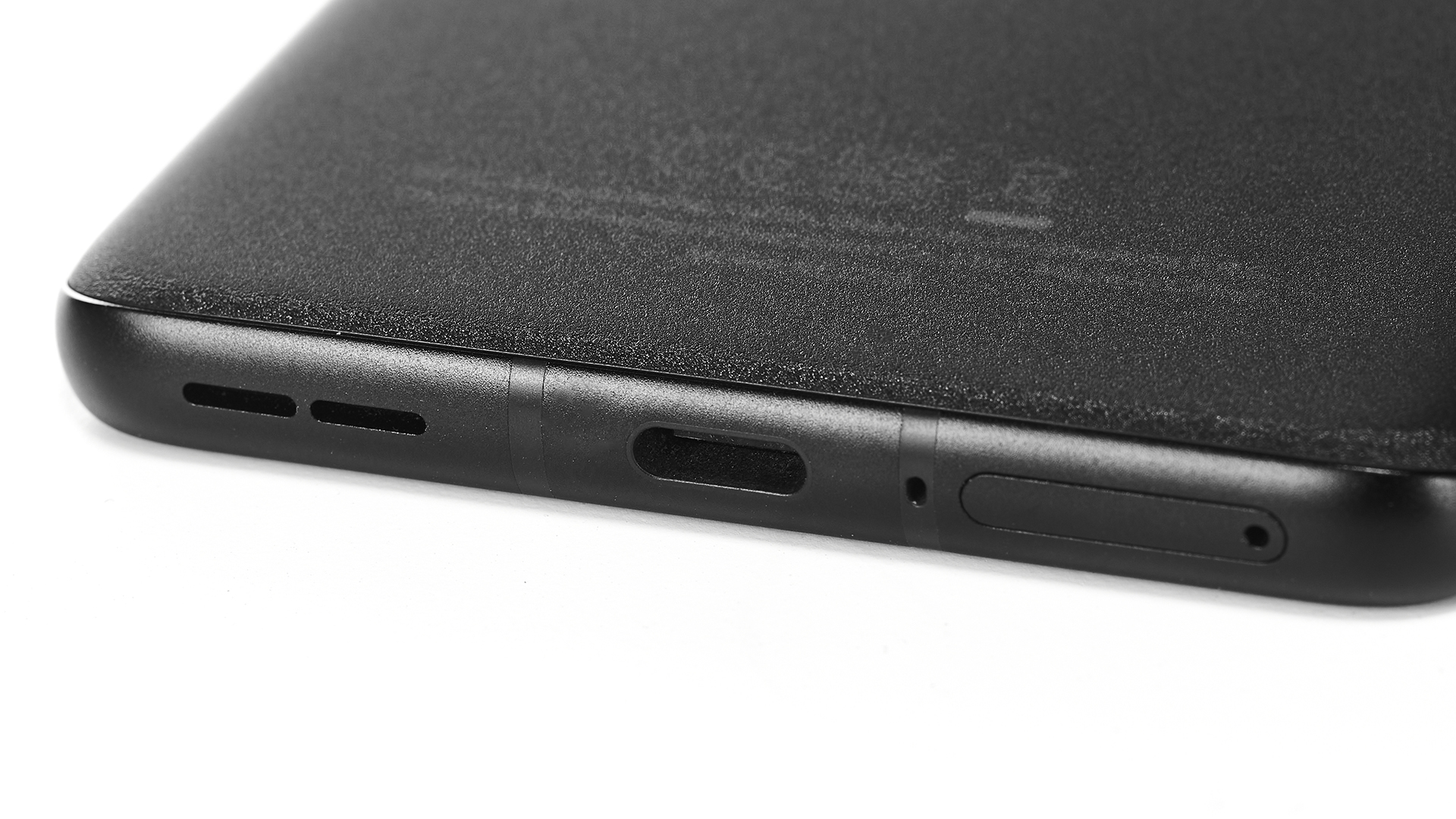
Whichever OnePlus 10 Pro model you choose, the basic design is the same. The key stat is its 6.7-inch curved-edged screen, which fronts the 8.6mm-thick, 201g chassis. While not quite in the same all-glass, all-metal field as the more expensive flagship handsets on the market, there’s undoubtedly a more quality feel compared to last year’s OnePlus 9 Pro.
The black plastic rear is protected by a layer of Gorilla Glass that offers a tactile boost as well as a little added security. The thin edges are well designed and appointed with all the controls in sensible places. There’s a USB-C socket and speaker vents on one end and, as with the OnePlus 9 Pro, we particularly like the three-position switch to select between silent, vibrate and normal sound modes.
What you won’t fail to notice pretty quickly is the oversized camera bump on the rear. The OnePlus 10 Pro is the company’s second collaboration with Hasselblad. The triple camera system and flash are the same hardware as before but we’re promised that the underlying software has been altogether refined.
One significant upgrade you won’t spot initially is that the fingerprint sensor has moved up the screen a little. Crucially, this adds a far better balance when trying to unlock the phone with one hand. It was all too easy to drop the OnePlus 9 Pro on the floor.
On the inside, it’s the all-new Snapdragon 8 Gen 1 at the helm with, according to OnePlus, so much cooling above and below the chipset that, laid out flat it would take up the size of an A5 piece of paper.
The battery is now even bigger. It comes at 5000mAh capacity but can still fully charge in just 32 minutes when combined with the 80W power adapter that is included in the box.
Features
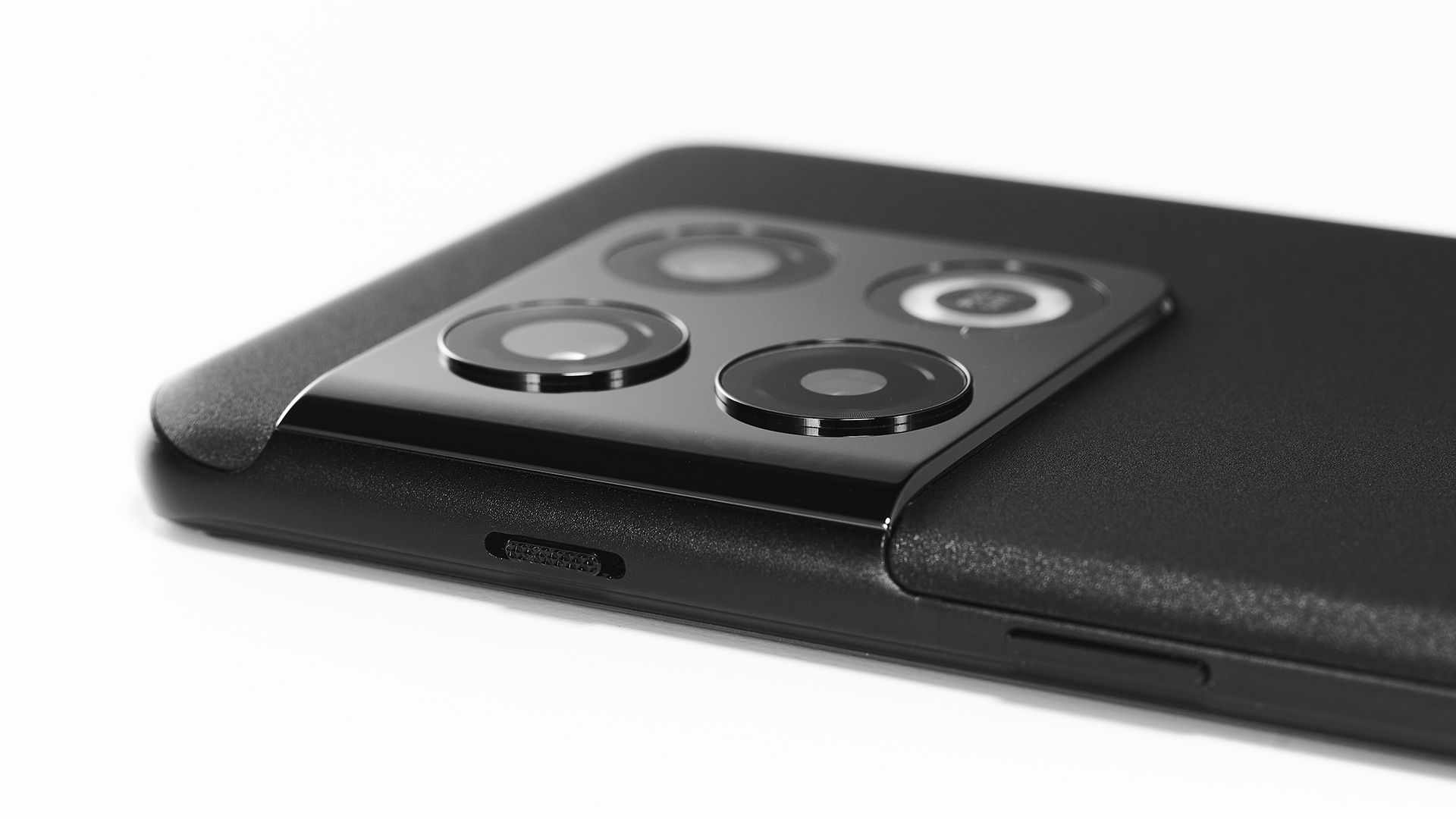
Like most Android phone manufacturers, OnePlus has its own UI skin on top of the stock Android 12 experience. OxygenOS 12.1's best feature is that it largely stays out of the way. There is the odd tiresome niggle in the way of app and service duplication – you get two file managers and two different photo apps, for example – but it never becomes a problem.
Again, it’s very much the same look and feel as Oxygen OS 11 on the OnePlus 9 Pro and comes with a set of wallpapers and widgets that feel in line with both Android in general and what OnePlus has done before. The company has promised that 10 Pro will support at least three years of Android software updates with an added fourth year of security patches. It’s also worth noting that Oxygen OS 13 was in development at the time of launch but we can’t comment on how much of a departure this might be when it arrives.
The main take home for software, though, is that it’s an entirely sensible and slick experience. How it will feel 20 months into a two-year contract is harder to say, but we've experienced nothing so much as a hiccup during testing. The one piece of advice we would offer is to use a phone case: it's all too easy for the very edges of the curved screen to register unintended touches from the hand holding the device.
The Hasselblad camera array is doubtless one of the most significant extras on the OnePlus 10 Pro. It’s a 50MP ultra-wide, 8MP telephoto and 48MP main camera triple threat. It’s capable of 10-bit photography, when shooting in Pro Mode using RAW files, with the colour production certified by Hasselblad.
The familiar software allows for plenty of photographic play time. There’s a 150-degree ultra-wide fish-eye mode, Dual-video for simultaneous movie capture with both front and back shooters, and a solid bokeh effect when using the Portrait filter. Head to the Pro section for full control of settings such as aperture, shutter speed, ISO and white balance. Video capture goes up to 8K resolution at 24fps but you can unleash full 120fps speeds if you drop down to 4K.
With all those extra colour shades on offer, we've encountered no issues with banding in our photography testing. Captured images feel well balanced across reds, greens and blues. The results from some comparison devices are a little truer for colour and a little more natural when using filters, but we're in no doubt you’ll get great pictures with the 10 Pro.
Its dedicated Game Mode switches the power profile and adds a quick-access drop-down settings menu to the thumb areas when in landscape. In it are quick toggles for Discord, WhatsApp, Screen Recorder, orientation lock and touch optimisation, among others. The Performance Settings button takes you to a menu where you can set your battery usage. If you want that all-out edge against the competition, just hit ProGamer Mode for the top touch-sensitive experience and a cavalier attitude to battery consumption.
On the inside, the HyperBoost gaming engine promises a more stable and responsive gaming experience than before, using frame stabilisers and latency-reduction tech. LTPO is able to manage dynamic frame rates to scale up to and down from 120Hz as required.
Playing the likes of PUBG and the Asphalt Nitro games is as quick as we’ve found on any mobile device. Gaming is lag-free when playing online and, at the risk of suggesting it makes you a better gamer – we’re pretty sure it doesn’t – we have found ourselves winning a few more deathmatches than usual. Take what you will from that.
Picture
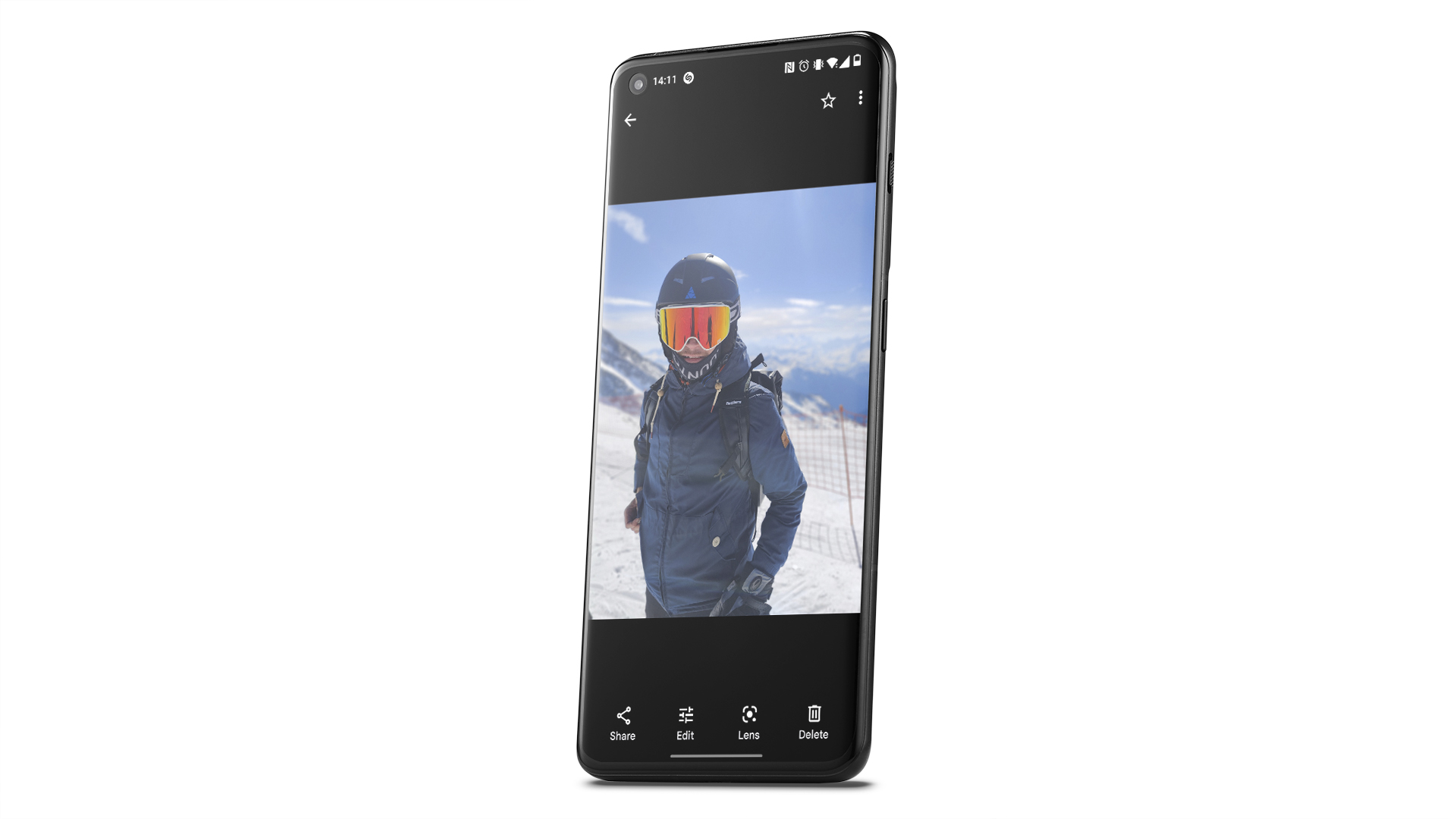
OnePlus has made significant picture quality improvements on last year’s flagship and that’s a great thing to see. On paper, its impressive-sounding 6.7-inch AMOLED with 10-bit colour depth and 525ppi pixel density are the same as last time but it’s in terms of quality where the difference lies.
Whereas the OnePlus 9 Pro was a touch washed out in the blacks, this latest model is as inky as they come. The display puts on a very impressive show when we watch the final episode of Pam & Tommy in HDR on Disney+. Tommy Lee’s jet black T-shirt is an excellent contrast to the bright LA sky shining through the blinds and into the office of the couple’s law firm.
This is no overly dynamic approach, though. There’s enough skill in the screen to bring out plenty of details in both bright areas and colours. It’s easy to make out the different knitted textures in Pamela’s cream dress, and the swirls in the high-polished mahogany meeting table look natural.
Equally both skin tone and details feel true. Pam’s foundation and eye-liner look is, of course, different to the stubble and goatee of her husband and the jowlier face of their lawyer, but their underlying complexions look properly contoured and shaded. The very best – and more expensive – flagships will look a little sharper, but that’s a fairly small difference and one that’s very much reflected in price.
Switching down a gear to SDR content with White Teeth on Netflix, the differences between the 10 Pro and something at the top of its game, such as the pricier iPhone 13 Pro Max, are minimal. The OnePlus matches Apple's handset in almost every department. For colour, for contrast, for detail, it’s practically the same picture. It’s really only that touch of sharpness that separates the two as Clara dances around her bedroom in the opening scenes but, at this slightly lower resolution source material, it’s even less noticeable than before.
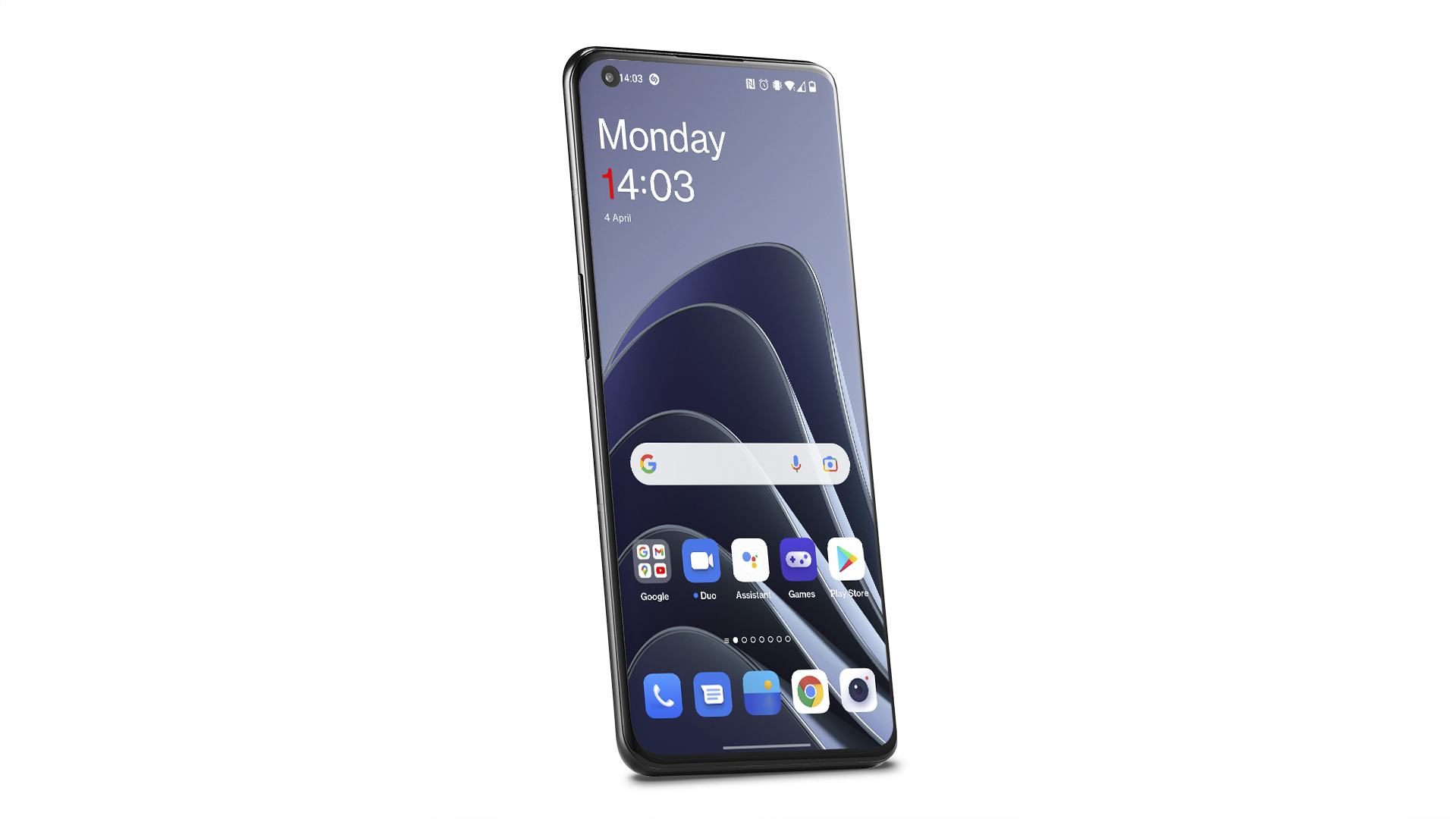
Finishes x2
Battery 5000mAh
Rear camera 48MP, 50MP, 8MP
OS Android 12 and OxygenOS
Dimensions (hwd) 163 x 74 x 8.6mm
Weight 200.5g
Processor Qualcomm Snapdragon 8 Gen 1
Screen 6.7in AMOLED
Resolution 1440 x 3216, 525ppi
Audio Bluetooth 5.2, aptX HD, LDAC
The only areas where one could view any serious difference with the picture performance is in terms of peak brightness and shadow detail.
The 10 Pro just doesn’t have the same level of nits under the hood as the iPhone. That means it can’t create that same dynamic level of tonal highlights and lowlights in any given frame.
Watching The Adam Project in HDR on Netflix, the iPhone gives us a fully-realised picture in the night-time forest scenes where Ryan Reynolds' character first meets his younger self. The dark trees in the shadows are as discernible as the spaceship’s bright lights. With the 10 Pro, it’s all too easy for much of that dark detail to be lost and leave us wondering what’s going on that we’re not quite seeing in the background of each scene. It’s also worth noting that there’s no Dolby Vision support on the OnePlus 10 Pro either.
The result is that it’s clear where the hardware savings do impact picture performance. Nonetheless, it’s very hard to fault what the 10 Pro offers, given how much more affordable it is.
Sound
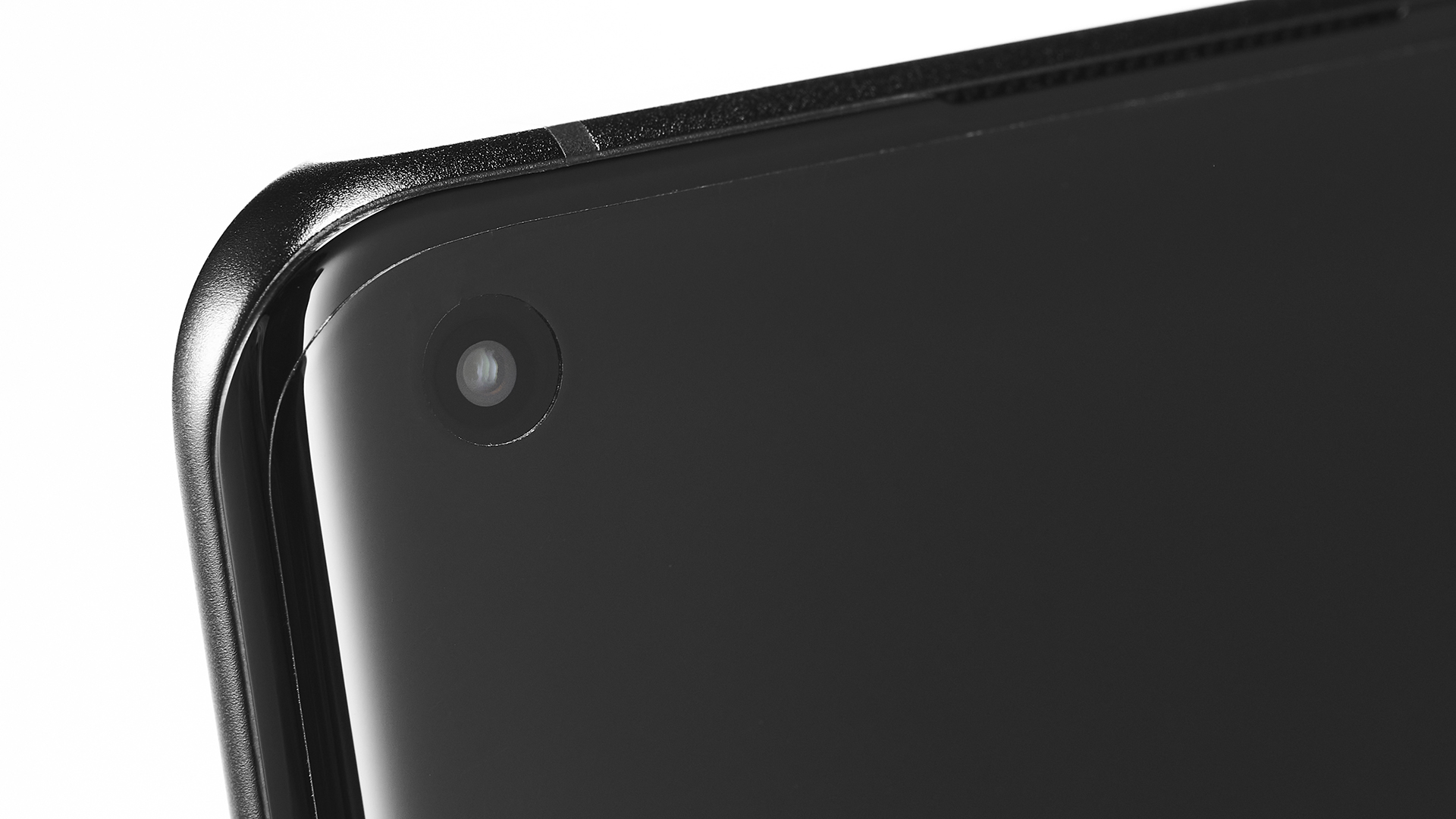
In terms of specs and features, the OnePlus 10 Pro certainly appears well placed for sound. It supports Dolby Atmos audio through headphones and presents the listener with a selection of EQ profiles in the form of scenario and environment-appropriate settings, such as Commute, Flight or Gaming instead of a slightly less tangible menu of frequency sliders. Movie or Music modes are the ones to use for most occasions, or you can use Smart to let the 10 Pro decide for you.
Listening to Blue Monday by New Order through headphones there’s a very likeable tonal balance to the sound. None of the high-pitched electro squiggles, the midrange vocals nor the bouncing bass dominate and it’s easy to get a good sense of the track.
There’s a decent effort with dynamics too, with some genuine dimension and depth. The bass notes feel nicely rounded, the vocals swing eerily from the background to the fore and back again, and there’s plenty of excitement to hold your interest.
Where the performance is not so fully formed is in terms of rhythm. There’s a slight breathiness to sounds such as the synth cymbals, the hi-hat and the bassline, where the timing is too loose to give a clean, crisp delivery. Head to a song with more attack such as Weapon Of Choice by Fatboy Slim and this more lackadaisical presentation can take up too much space and tend to obscure some of the detail that could otherwise be better separated.
Listen on a five-star flagship phone and you’ll get everything that the 10 Pro is missing. The iPhone 13 Pro Max, for example, really lifts Blue Monday. The music feels more carefully layered, and all the more complex and engaging for it. It’s dynamically superior too. There’s more punch to the bass, and with the Fatboy Slim track you get a more true to life representation of both the Hammond organ and the brushes used on the drums.
Interestingly, playing music via the OnePlus 10 Pro's speakers demonstrates very similar characteristics to when using headphones. The sound isn’t projected out quite as far as with the iPhone but it’s not a bad experience at all, as mobile phone speakers go. There’s still an impression of punch and it’s balanced enough to give a faithful account of the song. Again, the timing’s not quite there but, as with the rest of the audio, it’s well within the parameters of decent.
Decent, though, isn’t really enough when it comes to a flagship phone. Listening on a top portable should make you want to sit down and finish the track even after you’ve arrived at your destination. The OnePlus 10 Pro is a good enough music player to pick up your podcasts and get a good taste of your playlists while out and about, but you’ll have it switched off the second you’re through your door, and be itching to play your hi-fi instead.
Verdict
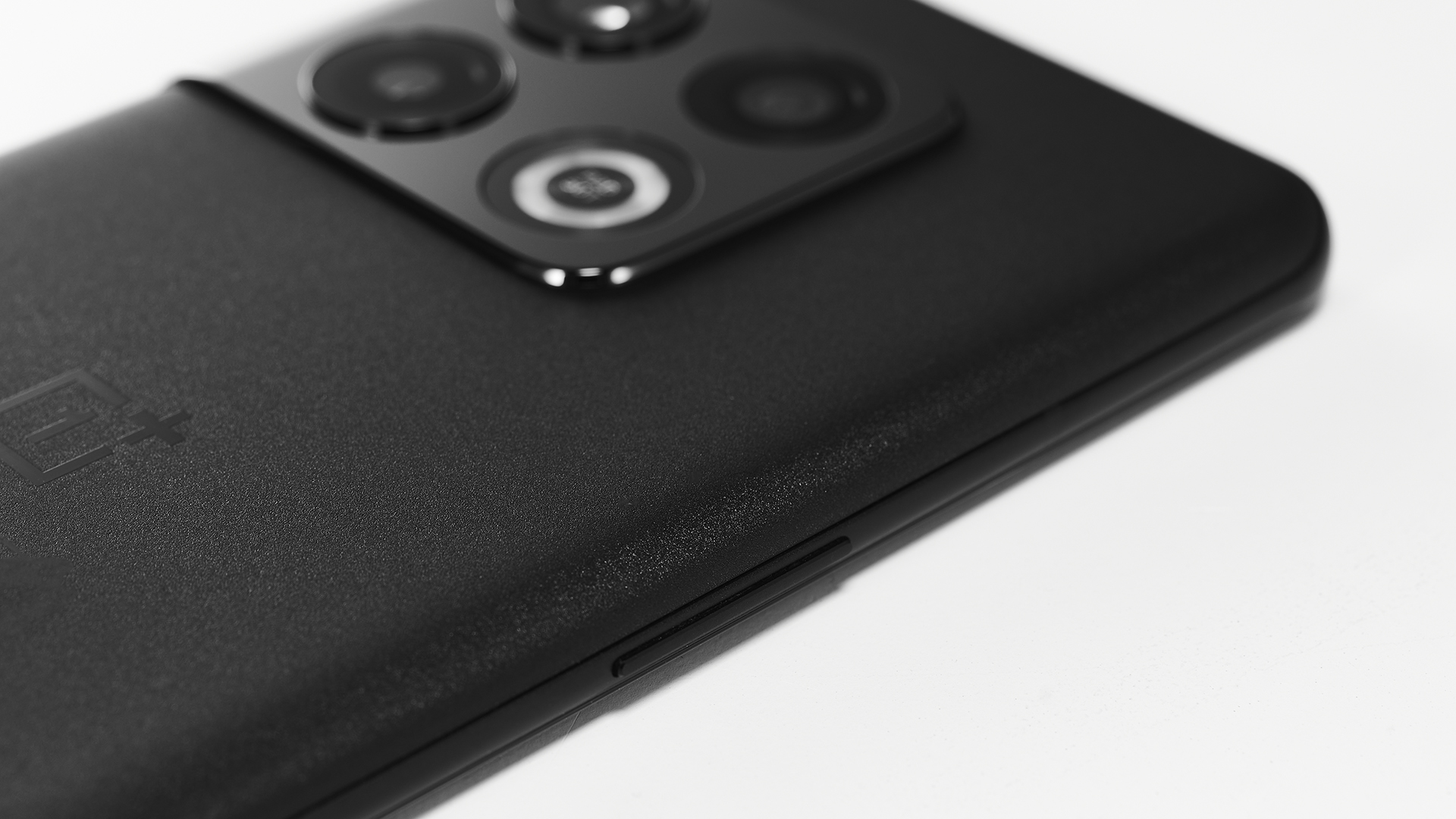
Comparing this cut-price flagship phone to other top-end mobiles is a bit of a rough ride for the OnePlus 10 Pro. Even so, it stands up to the test in most departments. In terms of build quality, photography, user experience, battery life and most other features, it’s more or less right up there and all for a smaller outlay. And, while it can’t quite reach the same heights on the video front, what you get for the price difference is actually very comparable.
Listening to music, though, is where you’ll notice the biggest downgrade. The audio performance is just not in the same class as the best flagship phones, nor really quite good enough for the step-down in outlay either. It makes a perfectly passable listen but ‘passable’ doesn’t win you five stars.
SCORES
- Screen 5
- Sound 3
- Features 5
MORE:
Read our review of the iPhone 13 Pro Max
Also consider the Samsung Galaxy S22 Ultra
Read our Sony Xperia 1 III review
Best Android phones 2022: Google-powered smartphones for all budgets
What Hi-Fi?, founded in 1976, is the world's leading independent guide to buying and owning hi-fi and home entertainment products. Our comprehensive tests help you buy the very best for your money, with our advice sections giving you step-by-step information on how to get even more from your music and movies. Everything is tested by our dedicated team of in-house reviewers in our custom-built test rooms in London, Reading and Bath. Our coveted five-star rating and Awards are recognised all over the world as the ultimate seal of approval, so you can buy with absolute confidence.
